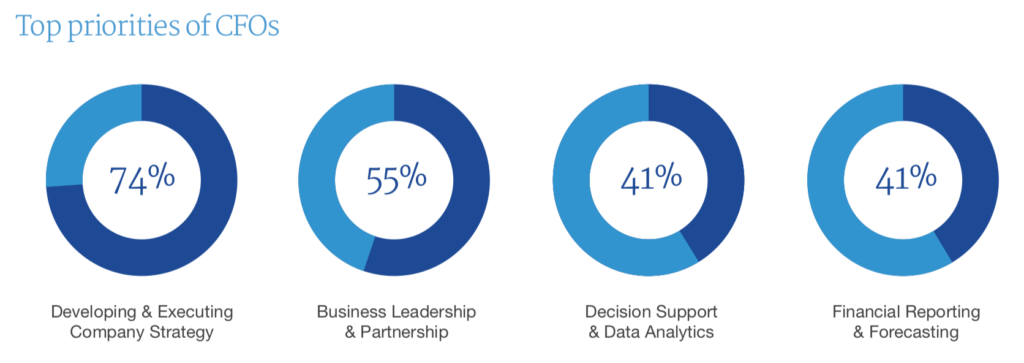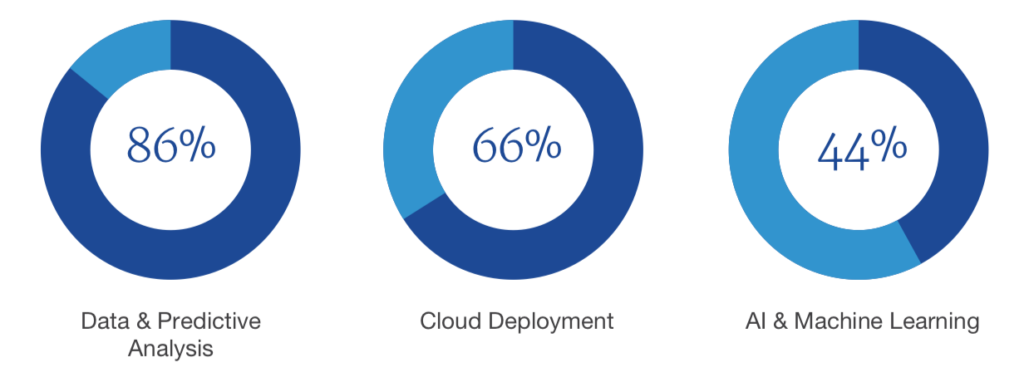 The CFO’s role increasingly involves partnering with the CEO and functional management to develop and execute corporate strategy. To be effective strategic business leaders in their companies, CFOs are embracing decision support and data analytics. CFOs report that data and predictive analytics will deliver the greatest impact over the next five years.
The CFO’s role increasingly involves partnering with the CEO and functional management to develop and execute corporate strategy. To be effective strategic business leaders in their companies, CFOs are embracing decision support and data analytics. CFOs report that data and predictive analytics will deliver the greatest impact over the next five years.
These are the insights from a survey of 440 CFOs conducted by Stanton Chase, an executive search firm. Results of their 2018 survey were recently summarized and published in Digital Transformation: Empowering the Evolution of the CFO.
The survey found that “while financial reporting and forecasting are still key components of the CFO mandate, the top three priorities speak to the growing importance of the CFO initiating higher level technology enabled data analysis and decision support as well as the shift of the CFO from a financially focused silo to an integral part of the leadership team.”

Digital transformation is now a significant focus of CFOs. They are employing modern technologies to automate traditional financial processes like reporting and planning, but also to deliver deeper business analytics. “The right analytical tools offer huge potential for the CFO to utilize their unique perspective to offer insight into their organization’s business activities, enabling them to further embrace their role as strategic corporate partner.”
According to the survey, the technology priorities of CFOs over the next five years include data and predictive analytics, cloud deployment of solutions, and Artificial Intelligence and Machine Learning.

Analysis Team’s practice is at the intersection of business and technology. We have a history of partnering with CFOs and their organizations to deploy technologies that improve analysis, reporting and planning. Here are a few of our top insights on the digital transformation challenge:
There are a lot of technology options, so understand your needs first: There’s a plethora of analytic and planning applications available today, and the technology is evolving rapidly. First, understand your company’s needs, business goals, and emerging challenges and then review the capabilities of the technologies to determine the best fit.
Get the right data, and prepare it for analysis: Understand what drives your business as a way to identify the right data to analyze. Combining data from different sources (on premise, cloud, external to the company, etc.) can be challenging – technical formats can vary, and labeling (the “master data”) may not be uniform. Analytics can only be as good as the data that feeds it, and data wrangling and cleansing will be part of the effort.
Create, calculate and report actionable metrics: Armed with the right (and good quality) data, match the analytics and performance indicators to the decisions that need to be made, and to the people who will make them. Deliver metrics that are understandable and actionable, which is key to their adoption by decision-makers.
Digital transformation is also human transformation: Communicate with and involve those whose work will be impacted by analytics and more data-oriented performance measurement. Attitudes and culture are powerful, and they need to be carefully managed before and through the digital transformation process. Cultural acceptance of analytics is important to get the business benefits you’re expecting.
How will advanced technologies help support you in your role as a business partner?
